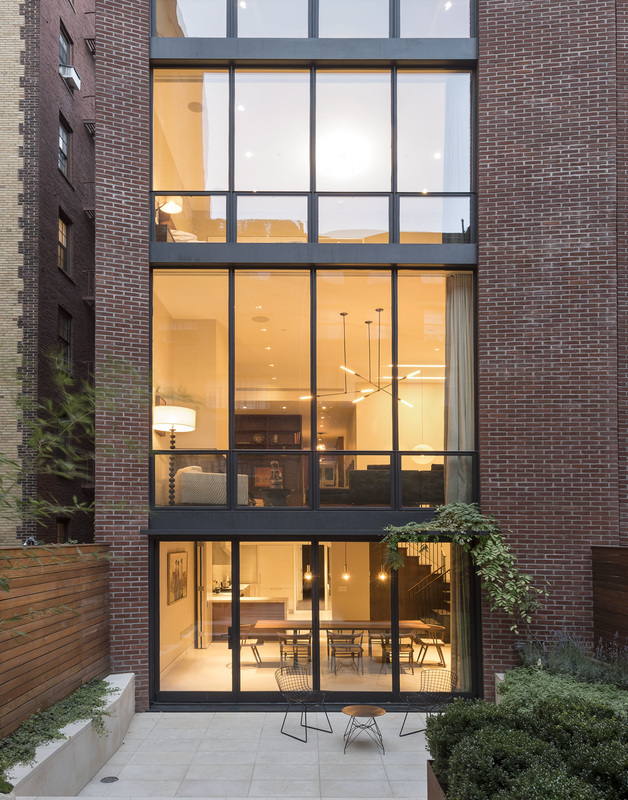When it comes to steel windows, ensuring energy efficiency is paramount. But how can you be certain that your windows are up to the task?
The answer lies in the air infiltration test criteria in accordance with ASTM E283. This standard test method not only determines the rate of air leakage through exterior windows, curtain walls, and doors but also provides a benchmark for evaluating the performance of steel windows.
In this article, we delve into the details of ASTM E283 testing criteria for steel windows and explore why it is crucial for manufacturers to comply with these standards. Join us as we unravel the importance of air infiltration testing, shed light on the test procedure, and compare ASTM E283 with other standard tests.
So, are you ready to discover the astonishing truth about ASTM E283 testing criteria and the energy efficiency of your steel windows? Let’s dive in!
**Key Takeaways:**
- ASTM E283 is a standard test method for determining the rate of air leakage through exterior windows, curtain walls, and doors.
- The test procedure involves adjusting the air flow to provide the specified test pressure difference across the test specimen.
- Meeting the criteria set by ASTM E283 ensures that steel windows contribute to energy efficiency and overall building performance.
- ASTM E283 is specifically designed for testing air infiltration, unlike other standards that focus on water penetration.
- By conducting the ASTM E283 test, manufacturers can validate the performance and quality of their steel windows, enhancing market value and differentiation.

Overview of ASTM E283 Test Procedure
The ASTM E283 test procedure is a critical step in determining the air leakage rates of exterior windows, curtain walls, and doors. By following this standardized method, manufacturers can assess the performance and quality of their products in terms of air infiltration.
The test is conducted in a controlled laboratory environment with consistent temperature and humidity. The aim is to replicate real-world conditions and provide accurate results. During the test, the air flow through the test chamber is carefully adjusted to generate the desired pressure differential across the specimen.
Various measurements are recorded throughout the test, including the absolute pressure, temperature, and relative humidity of the air. These parameters help in assessing the performance of the tested specimen and determining its compliance with the ASTM E283 criteria.
At the end of the test, a detailed and comprehensive test report is generated. This report contains all the necessary information to evaluate the air leakage rates and determine whether the product meets the specified performance criteria. The findings of the ASTM E283 test provide valuable insights into the airtightness and energy efficiency of steel windows, ensuring that they meet the necessary standards for optimal performance in buildings.
Importance of Air Infiltration Testing for Steel Windows
Air infiltration testing is crucial for steel windows as it helps determine their performance and quality. By conducting the ASTM E283 test, manufacturers can ensure that their steel windows meet the specified criteria for air leakage rates. This test provides valuable information about the ability of steel windows to prevent the infiltration of air through the exterior envelope. Meeting the criteria set by ASTM E283 ensures that steel windows contribute to energy efficiency, comfort, and overall building performance.
When it comes to steel windows, meeting the necessary criteria for air infiltration is of paramount importance. By conducting the ASTM E283 test, we can assess the performance and quality of our steel windows in a controlled environment. This test method helps us determine the air leakage rates of our products, providing invaluable insights into their ability to prevent the infiltration of air through the exterior envelope.
To emphasize the significance of air infiltration testing for steel windows, let’s take a closer look at some of the key benefits:
- Energy Efficiency: Meeting the ASTM E283 criteria for air leakage rates ensures that steel windows contribute to energy savings by minimizing air exchange and heat transfer.
- Comfort: By preventing drafts and maintaining consistent indoor temperatures, steel windows that pass the ASTM E283 test provide greater occupant comfort.
- Building Performance: Properly sealed steel windows can help improve indoor air quality and prevent issues related to moisture infiltration, enhancing the overall performance of the building.
| Benefits of Air Infiltration Testing for Steel Windows | ||
|---|---|---|
| Energy Efficiency | Comfort | Building Performance |
| Minimizes air exchange and heat transfer | Prevents drafts and maintains consistent indoor temperatures | Improves indoor air quality and prevents moisture-related issues |
By conducting air infiltration testing in accordance with ASTM E283 criteria for steel windows, we can ensure that our products meet high standards of performance and quality. This not only benefits our customers but also strengthens our position in the market. Choosing steel windows that have undergone thorough air infiltration testing guarantees energy efficiency, comfort, and long-term durability.
Comparing ASTM E283 Criteria with Other Standard Tests
When it comes to testing the air leakage rates of exterior windows, curtain walls, and doors, the ASTM E283 standard is specifically designed for this purpose. Unlike other standards, such as ASTM E331 which focuses on water penetration, ASTM E283 is dedicated to air infiltration. It provides manufacturers with clear criteria to assess the performance and quality of their steel windows.
Benefits of ASTM E283 Test for Steel Window Manufacturers
Steel window manufacturers can benefit greatly from conducting the ASTM E283 test to validate the performance and quality of their products.
Conducting the ASTM E283 test offers several key benefits for steel window manufacturers:
- Validation of Performance: The test ensures that steel windows meet the specified criteria for air leakage rates, guaranteeing their ability to prevent the infiltration of air through the exterior envelope. This validation helps manufacturers build trust with customers, emphasizing the quality and reliability of their steel windows.
- Enhanced Energy Efficiency: Steel windows that meet the ASTM E283 criteria contribute to overall energy efficiency in buildings. By minimizing air leakage, these windows help reduce energy consumption, lower heating and cooling costs, and create more sustainable and eco-friendly spaces. This energy-saving feature is a significant advantage for both manufacturers and customers concerned about environmental impact and cost savings.
- Market Differentiation: The ASTM E283 test provides an opportunity for steel window manufacturers to differentiate their products in the market. By showcasing compliance with the ASTM E283 criteria, manufacturers can position their steel windows as superior in terms of airtightness and energy efficiency compared to competitors who may not have undergone the same rigorous testing. This differentiation can help attract discerning customers who prioritize performance and quality when choosing steel windows for their projects.
- Valuable Test Report: The comprehensive test report generated at the end of the ASTM E283 test provides manufacturers with crucial data and insights. This report can be used for marketing purposes, showcasing the outstanding performance of their steel windows. The data can also inform product development, helping manufacturers improve their designs and further optimize the energy efficiency and airtightness of their steel windows.
Importance of Air Infiltration Testing in Building Envelopes
Air infiltration testing plays a crucial role in assessing the performance of building envelopes. By conducting tests such as the ASTM E283, manufacturers and building professionals can identify and address any issues related to air leakage. Airtight building envelopes are essential for improving energy efficiency, indoor air quality, and occupant comfort.
Through air infiltration testing, we can measure the rate of air leakage and determine if the building envelope meets the required performance standards. This testing provides valuable insights that can guide design decisions, construction practices, and maintenance protocols.
To illustrate the importance of air infiltration testing, let’s take a look at the following table that compares the impact of different levels of air infiltration on building performance:
| Level of Air Infiltration | Impact on Building Performance |
|---|---|
| High | – Increased energy consumption – Poor indoor air quality – Drafts and discomfort – Potential moisture damage |
| Medium | – Moderate energy consumption – Some impact on indoor air quality – Occasional drafts and discomfort – Potential moisture damage in specific areas |
| Low | – Low energy consumption – Good indoor air quality – Minimal drafts and discomfort – Reduced risk of moisture damage |
The table clearly demonstrates that minimizing air infiltration is crucial for achieving optimal building performance and occupant satisfaction. Air infiltration testing allows us to assess the current state of the building envelope and take the necessary steps to improve its efficiency and functionality.
Conclusion
In conclusion, the ASTM E283 test provides a standardized method for determining the air leakage rates of exterior windows, curtain walls, and doors. For steel windows, meeting the criteria established by ASTM E283 is essential to ensure their performance and quality. By conducting this test, manufacturers can validate the airtightness and energy efficiency of their steel windows, contributing to more comfortable and energy-efficient spaces.
By prioritizing air infiltration testing in accordance with ASTM E283 criteria, building professionals can enhance the overall performance of building envelopes. Airtight steel windows not only prevent the infiltration of air but also improve energy efficiency and indoor air quality. This ensures that buildings meet the required performance standards and create healthier and more sustainable environments.
In summary, implementing air infiltration test criteria in accordance with ASTM E283 for steel windows is crucial. By adhering to these standards, manufacturers can provide high-quality products that meet airtightness and energy efficiency requirements. This not only enhances the market value of their steel windows but also contributes to improved building performance and occupant comfort.
FAQ
What is ASTM E283?
ASTM E283 is a standard test method for determining the rate of air leakage through exterior windows, curtain walls, and doors under specified pressure differences across the specimen.
Is ASTM E283 applicable to all fenestration products?
Yes, the test method is applicable to all products seeking NAFS compliant reports for fenestration products.
How is the ASTM E283 test conducted?
The test is conducted in a laboratory setting with constant temperature and humidity. It involves eliminating extraneous chamber leakage and adjusting the air flow through the test chamber to provide the specified test pressure difference across the test specimen.
What measurements are recorded during the ASTM E283 test?
The measurements recorded include the absolute pressure, temperature, and relative humidity of the air.
Why is air infiltration testing important for steel windows?
Air infiltration testing helps determine the performance and quality of steel windows by assessing their ability to prevent the infiltration of air through the exterior envelope.
How does meeting the ASTM E283 criteria benefit steel window manufacturers?
By meeting the criteria set by ASTM E283, manufacturers can assure customers that their steel windows are airtight and energy efficient, enhancing the market value of their products and differentiating them from competitors.
How does air infiltration testing contribute to the overall performance of building envelopes?
Air infiltration testing helps identify and address issues related to air leakage, which in turn improves energy efficiency, indoor air quality, and occupant comfort in buildings.



